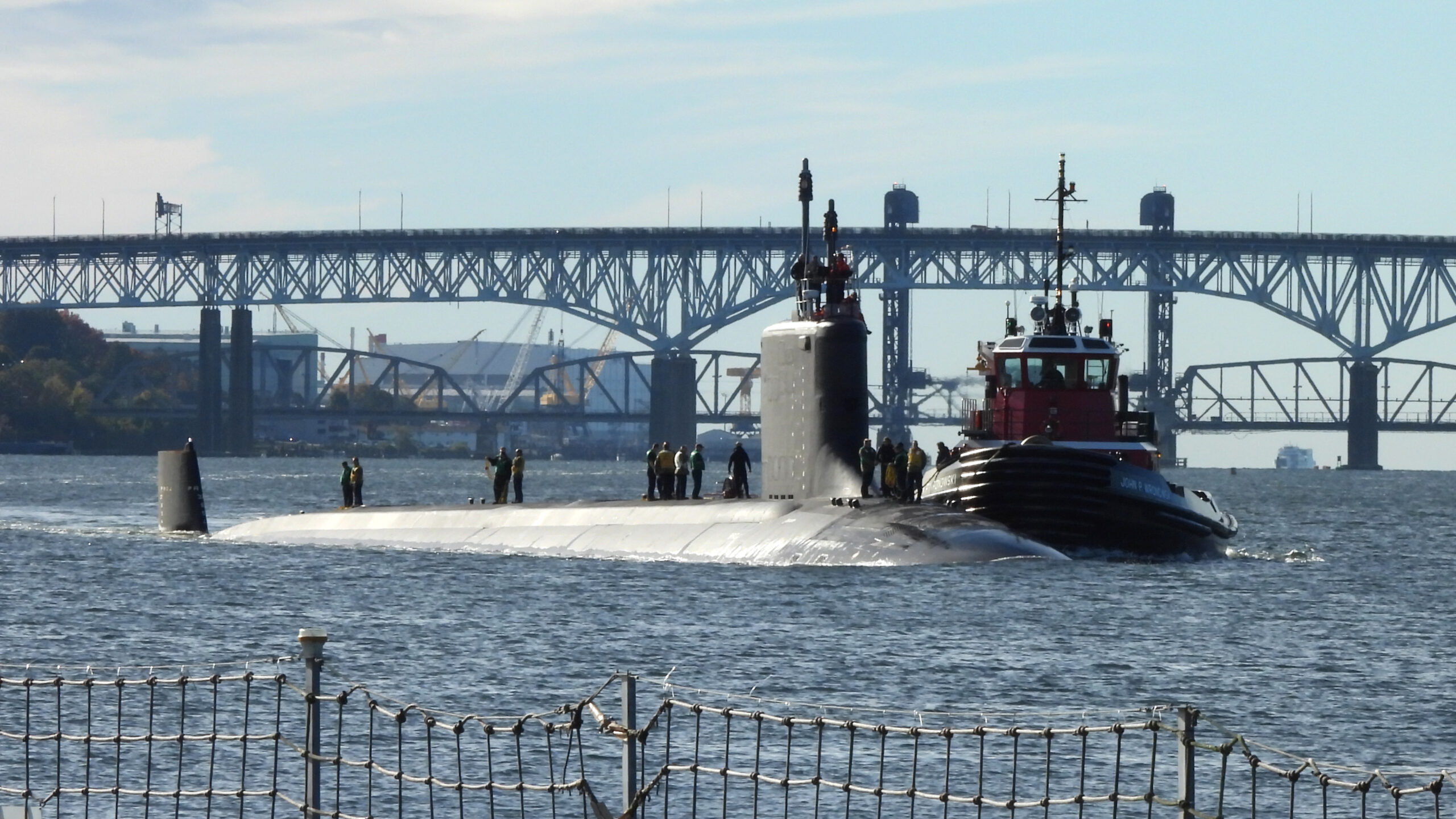
221014-N-ZZ999-0049 GROTON, Conn. (October 14, 2022) – The Virginia-class USS Oregon (SSN 793) transits the Thames River after returning from routine operations in route to Naval Submarine Base New London in Groton, Conn., Oct. 14. (U.S. Navy photo by Petty Officer 2nd Class Wesley Towner)
WASHINGTON — The Navy’s new 30-year shipbuilding plan, unveiled today, shows the US plans to build additional Virginia-class submarines to replace those eventually sold to Australia as part of the AUKUS arrangement, but also leaves open many questions of how that will affect the Navy’s other shipbuilding plans and an overburdened industrial base.
“Based on the trilateral agreement announcement of March 2023, the Navy anticipates building additional Virginia class SSNs in the 2030s as replacements for submarines sold to Australia,” according to the new plan, a copy of which was provided by the Navy to Breaking Defense while its top leaders testified to the Senate Armed Services Committee about its fiscal 2024 budget request.
President Joe Biden alongside his British and Australian counterparts in March unveiled a multi-phase plan, dubbed the “optimal pathway,” that will deliver nuclear-powered submarines to Australia in the 2040s. One of the key steps to the plan includes selling at least three, and up to five, American Virginia-class subs to Canberra. It was not clear at that time whether the US would replace those boats with new Virginia-class subs or focus on its next-generation sub, SSN(X).
The new shipbuilding plan clears up that ambiguity but is also frank about the fact there are still many uncertainties about what challenges the trilateral security pact, AUKUS, could have on the Navy and the industrial base moving forward.
“The full impact of AUKUS upon the Navy’s shipbuilding plan cannot be characterized in this year’s report given the conclusion of the March 2023 trilateral agreement coincided with the finalization of this report coupled with additional studies that will continue this summer,” according to the shipbuilding report.
Another uncertainty surrounding this year’s shipbuilding plan is a separate Pentagon assessment called the “Battle Force Ship Assessment and Requirement Report,” which will not be completed until June 2023. That report’s preliminary findings did “not inform” the new shipbuilding plan, but is expected to impact the FY25 shipbuilding plan.
Much of this year’s plan is largely a redux of last year’s, which lays out three potential three shipbuilding profiles for lawmakers to consider when crafting the Pentagon’s budget.
The first two options assume the Navy’s budget sees limited growth and result in fleet sizes of either 319 or 328 ships in FY53, the farthest year out projected in the plan. The document also states the limited budget options do “not procure all platforms at the [Navy’s] desired rate.”
“The primary differences between the baseline PB2024 and alternative 2 is the focus on procuring more SSNs and unmanned vessels within the constrained [table of allowance],” according to the document. “Alternative 2 continues procuring Virginia class submarines along with the future SSN(X) in the out years as opposed to the PB2024 profile, which ceases procurement of Virginia class submarines when SSN(X) begins.”
“Alternative 2 also continues to procure DDG 51 [Flight] IIIs longer than PB2024, delays the shift to
DDG(X), and procures fewer of both,” the document continues. “This enables a larger SSN force and procurement of a larger combat logistics force due to savings created by continuing to buy the less expensive SSN and fewer DDG(X).”
The third alternative, which assumes the Navy receives a significantly larger budget in the future years, would result in a fleet of 367 ships in FY53.
“Alternative 3 represents procuring to a larger Navy. This alternative shifts CVNs to 4-year centers and not only shifts to the future SSN(X) and DDG(X) but also procures the platforms at a consistent rate of at least two per year,” according to the plan.






















